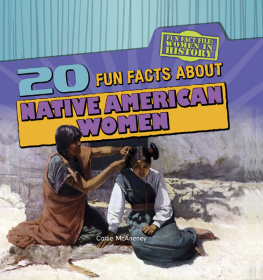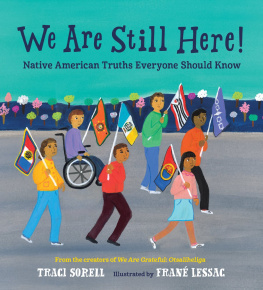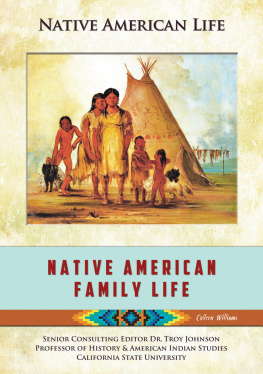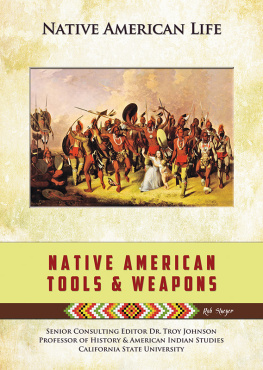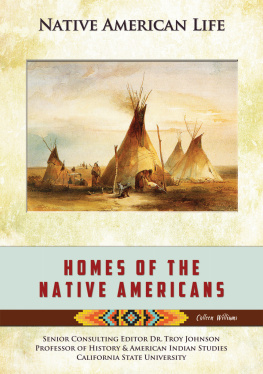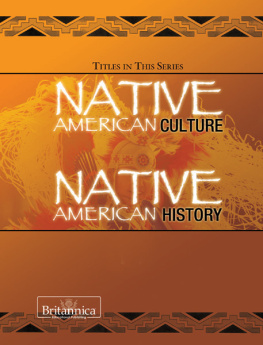About the Authors
Arlene Hirschfelder is author or editor of numerous books on Native Americans, including Native Americans: A History in Pictures and Rising Voices: The Writings of Young Native Americans. She has been a consultant to the Smithsonians National Museum of the American Indian.
Paulette F. Molin , a member of the Minnesota Chippewa Tribe from the White Earth Reservation, is the author of American Indian Themes in Young Adult Literature (Scarecrow, 2005). She has worked in educational administration and cocurated exhibitions on American Indian boarding school history.
Yvonne Wakim Dennis (Cherokee/Sand Hill/Arab), the author of Children of Native America Today and other books for children and adults, serves as education director of the Childrens Cultural Center of Native America. She is a multicultural consultant for businesses, schools, and organizations.
Hirschfelder, Molin, and Dennis coauthored the award-winning book, American Indian Stereotypes in the World of Children: A Reader and Bibliography , published by Scarecrow Press in 1982 and 1999. For more than twenty-five years, it has continued to be a seminal work on the topic.
Acknowledgments
Thank you to all the individuals and organizations that assisted us:
Association for the Study of American Indian Literatures Listserv
Ginny Z. Berson, National Federation of Community Broadcasters
Tommy Cheng, Hawaiian culture and hula teacher
Lee Francis IV, Wordcraft Circle of Native Writers and Storytellers
Hampton (Virginia) Public Library, especially Inter-Library Loan service
Megan Minoka Hill, Harvard (University) Project on American Indian Economic Development
Geary Hobson, poet, novelist, literary scholar
Rima Ibrahim, Brooklyn Museum
Shawn Pensoneau, National Indian Gaming Commission
Joseph Procopio, Economic Policy Institute
Kimberly Roppolo, Wordcraft Circle of Native Writers and Storytellers
Brittany Sandefur, All Nations Skate Project
Beverly Singer, independent filmmaker
Mytia Smith, American Indian Film Institute
Loris Taylor, Native Public Media
Jack Trope, Association on American Indian Affairs
Stephen Ryan, senior editor, The Scarecrow Press, Inc.
Jayme Bartles Reed, production editor, Rowman & Littlefield
Christen Karniski, assistant editor, The Scarecrow Press, Inc.
History
ANCIENT AMERICA
Fourteen Books about Ancient America
- Ancient Cahokia and the Mississippians , by Timothy R. Pauketat (2004).
- Ancient Hawaii , by Herb Kawainui Kane (1998).
- Ancient North America , by Brian M. Fagan (2005).
- Ancient Puebloan Southwest , by John Kantner (2005).
- Ancient Ruins of the Southwest: An Archaeological Guide , revised edition, by David Grant Noble (1991).
- Atlas of Ancient America , by Michael Coe, Dean Snow, and Elizabeth Benson (1986).
- Exploring Ancient Native America: An Archaeological Guide , by David Hurst Thomas (2000).
- The First Americans (Time-Life Books: The American Indians), series edited by Henry Woodhead (1992).
- Guide to Ancient Native American Sites , by Michael Durham (1994).
- Indian Mounds of the Middle Ohio Valley: A Guide to Mounds and Earthworks of the Adena, Hopewell, Cole, and Fort Ancient People , by Susan L. Woodward and Jerry N. McDonald (2002).
- In Search of Ancient Alaska: Evidence of Mysteries of the Past , by Ellen Bielawski (2006).
- Keepers of the Treasures: Protecting Historic Properties and Cultural Traditions on Indian Lands , by Patricia Parker (1990).
- Native Americans before 1492: The Moundbuilding Centers of the Eastern Woodlands , by Lynda Norene Shaffer (1992).
- The Rock Art of Eastern North America: Capturing Images and Insight , edited by Carol Diaz-Granados and James R. Duncan (2000).
Ancient and Historic Sites
Many ancient and historic areas in the United States have played a significant role in the history of Native Americans. These include archaeological sites, mounds, parks, battlegrounds, treaty sites, tribal villages, trails, massacre sites, trading posts, churches, forts, and other cultural properties.
The National Park Service (NPS), which has numerous designations for these ancient and historic areas, is the agency that cares for these places. Listed below are the Web sites for NPS lists of nationally designated sites:
National Heritage Areas: http://www.cr.nps.gov/heritageareas/VST/INDEX.HTM
National Register of Historic Places: http://www.cr.nps.gov/nr
National Historic Landmarks Program: http://www.cr.nps.gov/nhl/designations/listsofNHLs.htm
TIMELINE: 1507 TO 1911
| 1507 | The name America was used for the first time on a 1507 world map created by Martin Waldseemller. |
| 154042 | Native peoples living in what is now Arizona, New Mexico, Texas, and Kansas encountered non-Indians for the first time when Spanish explorer Francisco Vsquez de Coronado and hundreds of his followers searched in vain for the Seven Cities of Gold. |
| 156465 | French artist Jacques Le Moyne drew some of the earliest known European pictorial representations of American Indians. |
| 1565 | The oldest permanent European settlement in what is now the United States was established in St. Augustine, present-day Florida, in the Timucuan homeland. |
| 1585 | Sir Walter Raleigh established the first English settlement in North America on Roanoke Island, present-day North Carolina. The colony lasted one year.
Artist and cartographer John White accompanied a Raleigh-sponsored voyage to present-day Outer Banks of North Carolina, where he made numerous sketches of Native people. |
| 1598 | Spanish colonist Juan de Oate took formal possession of an area encompassing Texas, New Mexico, Arizona, and lower California in the name of Spain and established the first Spanish capital near what is known today as Ohkay Owingeh (formerly San Juan Pueblo). |
| 160315 | Samuel de Champlains voyages in the Northeast lead to extensive contacts with various Algonquian and Iroquois tribal nations. |
| 1607 | The British Virginia Company established a settlement at Jamestown (present-day Virginia) in the homeland of the Powhatan Chiefdom. |
| 1609 | The Spanish founded Santa Fe (present-day New Mexico) in the Pueblo homeland. |
| 1620 | English colonists arrived at Plymouth, Massachusetts. Barely surviving the first winter, they were assisted by Tisquantum (Squanto) (Wampanoag), who served as a cultural broker. |
| 1624 | Dutch colonists founded Fort Orange (Albany) in New Netherlands (New York) in Algonquian and Iroquoian territory. |
| 1626 | Carnarsee/Shinnecock/Manhattan Indians who occupied the southern end of the island of what is now Manhattan negotiated a land transaction with Peter Minuit, Dutch governor of New Amsterdam, now New York. The only account of the event was contained in a letter written by a Dutch official indicating that they have bought the island of Manhattes from the Wild Men for the value of sixty guilders. |
| 1638 | English colonists in what is now New Haven, Connecticut, negotiated a land sale with Quinnipiac Indians and established what is called the first reservation in the United States. |
| 1650 | John Eliot, an English missionary known as the Apostle to the Indians, established Natick, the first of fourteen praying Indian villages in Massachusetts Bay Colony. Indians were required to convert to Christianity and renounce their Native languages, ceremonies, beliefs, dress, and customs in the praying towns. |


